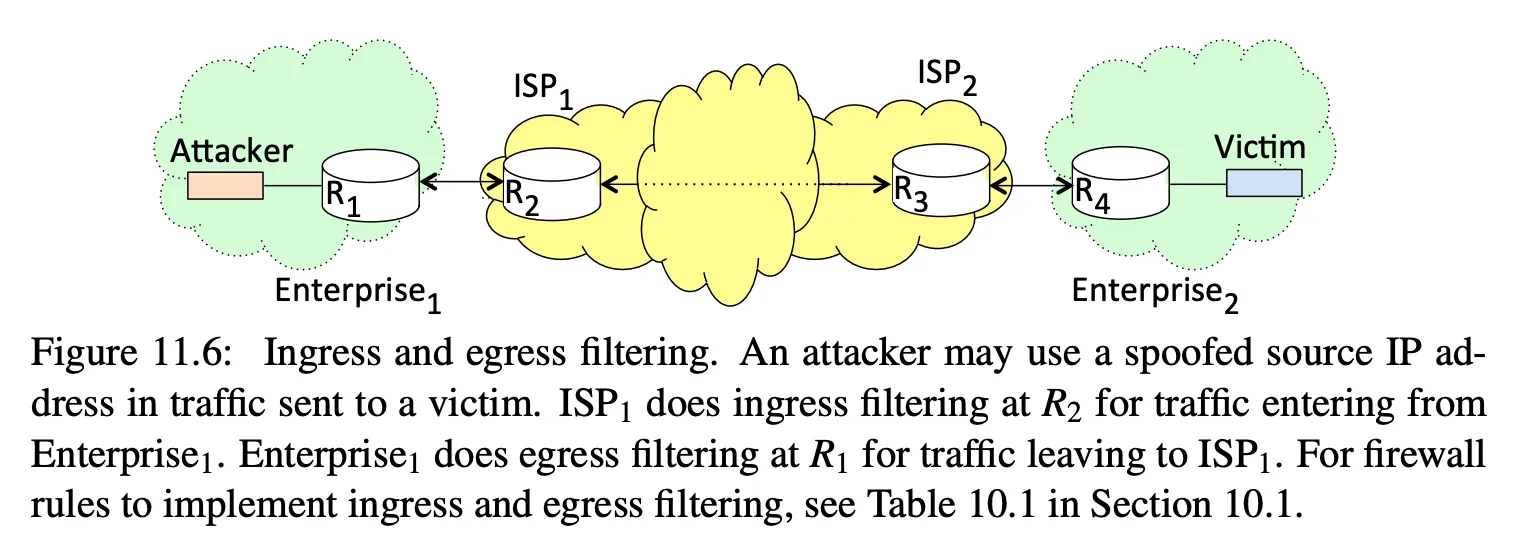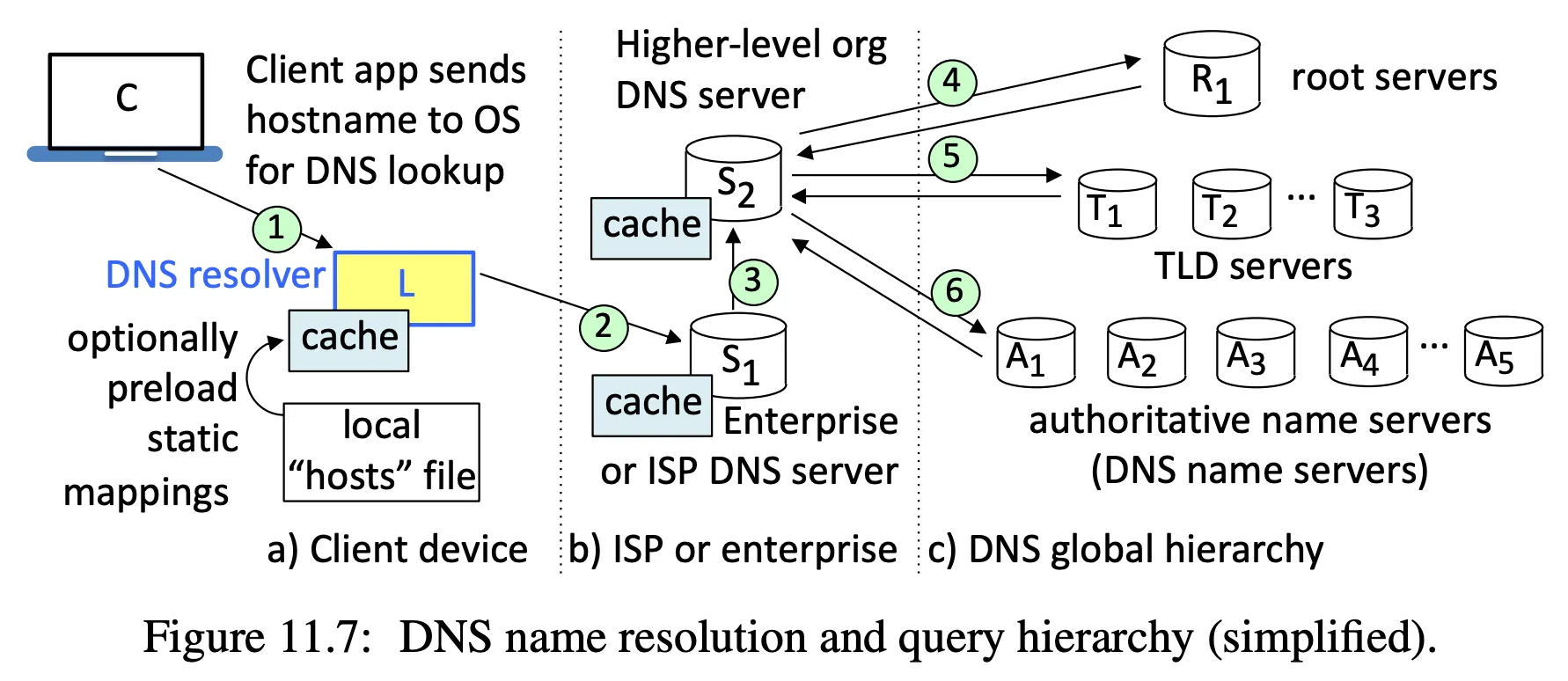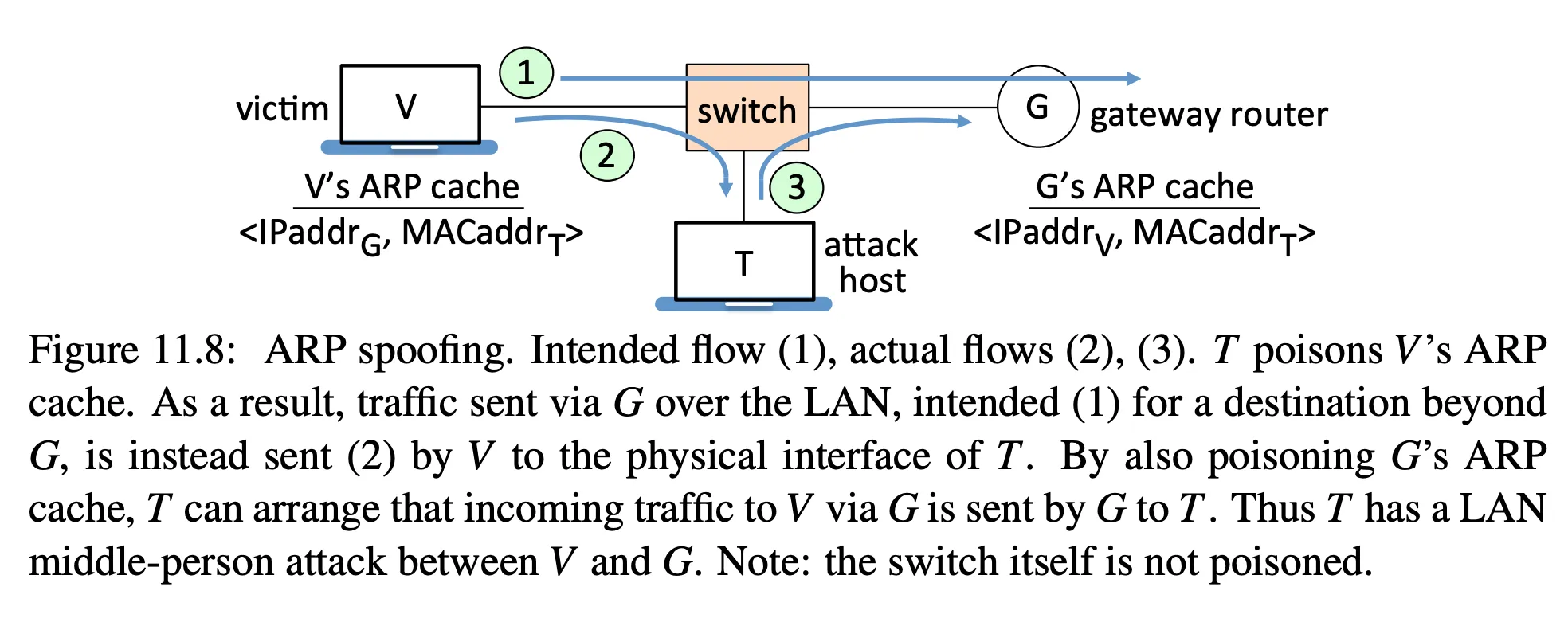Denial of Service and address resolution attacks
Questions on the readings
The readings today are from Computer Security and the Internet, Chapter 11, sections 11.4 - 11.5.
Denial of Service (DoS) attacks
-
an attacker denies legitimate users access to a service by degrading performance or causing failure
- flooding attacks exhaust resources — network bandwidth, CPU, memory, disk space
-
motives
- financial gain via extortion
- commercial competitive gain by a competitor
- activism
- information warfare
- hacker experimentation / ego boost
- vengeance
-
distributed denial of service (DDoS) attack
- may use a botnet
- may spoof source addresses
-
historical examples: malformed packets can trigger implementation errors that terminate a process or crash the operating system
- Ping of Death was a ping (ICMP echo request) sent as packet fragments whose total length exceeds the 65,535-byte maximum IP packet size — crashed numerous TCP/IP stack implementations circa 1996 by overflowing allocated storage
- Teardrop sent an IP packet in fragments with fragment offset fields set so that reassembly resulted in overlapping pieces—crashing TCP/IP reassembly code in some implementations, exhausting resources in others
- LAND sent a SYN packet with source address and port equal to destination address and port, crashing some implementations that sent responses to themselves repeatedly
-
historical example: spoofing
- SYN flooding is an attack where a client sends a SYN packet to open a TCP connection but never completes the connection. Older TCP implementations kept the connection in “half open” state in this case. If an attacker sent many SYN packets, they could fill this resource, causing the operating system to reject any subsequent TCP connections.
- PING (ICMP echo request) flooding
- UDP flooding
- A smurf flood sends a ping (ICMP echo request) to the broadcast address of a network. Listening hosts all send an ICMP echo reply. Can also be launched from a compromised host in a network. Note this is an amplification attack, which is particularly useful for an attacker.
-
note that any Internet host can send any of these packets
-
high impact, but easily fixed
Defenses
- ingress filtering and egress filtering
- e.g. drop packets sent to broadcast addresses
- e.g. filter out packets not originating from accepted hosts

- disabling unused services
- rate limiting of ICMP responses
- patching software that is vulnerable
- upstream filtering by ISPs protects against DoS attacks
DNS attacks
- DNS translates host names into IP addresses

-
pharming attack — falsifies name to address resolution
-
attack vectors
- local host file
- tampering at intermediate servers
- network-based response alteration
-
DNS cache poisoning
- queries sent with a random ID
- a response should carry the same ID
- an attacker who can guess an ID (e.g. if not properly randomized) can send a response to a cache, e.g. using a spoofed source address, and get the DNS cache to cache the bad response
-
a general defense is DNSSEC, but its deployment has been slow
- see also Verisign DNSSEC Scoreboard
ARP attacks
- ARP spoofing

-
attack
- false ARP replies that are cached
- the problem is that replies are not authenticated
-
defense
- static, read-only tables
- switches that inspect ARP responses and block suspicious ones
- long-term it would be nice to improve ARP itself